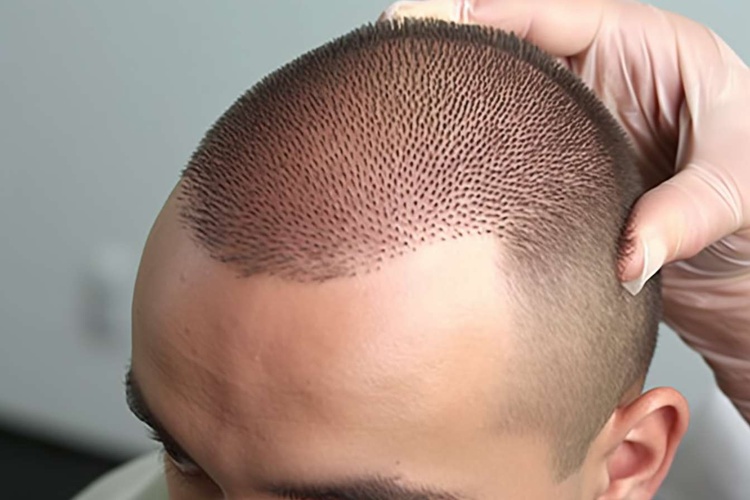Understand Alopecia and Its Impact on Hair Health
Alopecia is a complex hair loss condition that affects millions of people worldwide. This autoimmune disorder can cause partial or complete hair loss on the scalp and other parts of the body. Understanding alopecia is crucial for those affected by it, as well as for their loved ones and healthcare providers. This article delves into the various aspects of alopecia, exploring its causes, symptoms, and impact on both physical and emotional well-being, along with management options available to those living with this condition.

What is Alopecia?
Alopecia is a general term for hair loss, but it most commonly refers to autoimmune-related hair loss conditions. The most prevalent form is alopecia areata, where the immune system mistakenly attacks hair follicles, leading to patchy hair loss. Other types include alopecia totalis (complete scalp hair loss) and alopecia universalis (loss of all body hair). While alopecia can affect anyone, it often begins in childhood or early adulthood, impacting individuals of all genders and ethnicities.
Causes and Risk Factors
The exact cause of alopecia remains unclear, but researchers have identified several factors that may contribute to its development:
-
Genetics: A family history of alopecia or other autoimmune disorders increases the risk.
-
Environmental triggers: Stress, hormonal changes, and certain infections may trigger the onset or exacerbation of alopecia.
-
Immune system dysfunction: An overactive immune response can lead to the attack on hair follicles.
-
Other autoimmune conditions: People with conditions like thyroid disorders, vitiligo, or lupus may be more susceptible to developing alopecia.
Understanding these risk factors can help individuals and healthcare providers in identifying and managing the condition more effectively.
Recognizing the Symptoms
The primary symptom of alopecia areata is patchy hair loss, often occurring suddenly and without warning. Other signs to watch for include:
-
Circular bald patches on the scalp or other parts of the body
-
“Exclamation mark” hairs: short, broken hairs that taper at the bottom
-
Nail changes, such as pitting or ridges on fingernails and toenails
-
In some cases, complete loss of scalp hair (alopecia totalis) or body hair (alopecia universalis)
Early recognition of these symptoms can lead to prompt diagnosis and treatment, potentially improving outcomes for those affected by alopecia.
Impact on Physical and Emotional Health
Alopecia can have far-reaching effects on an individual’s physical appearance and emotional well-being. Physically, hair loss can lead to increased sensitivity to temperature changes and sun exposure. However, the emotional impact is often more profound:
-
Self-esteem issues: Hair loss can significantly affect body image and self-confidence.
-
Anxiety and depression: The unpredictable nature of alopecia can lead to heightened anxiety and depressive symptoms.
-
Social withdrawal: Some individuals may avoid social situations due to embarrassment or fear of judgment.
-
Relationship challenges: Alopecia can strain personal and professional relationships.
Recognizing and addressing these emotional impacts is crucial for comprehensive care and support of individuals with alopecia.
Management and Support Options
While there is no cure for alopecia, several management options can help control symptoms and improve quality of life:
-
Topical treatments: Corticosteroids or minoxidil can be applied to the affected areas to stimulate hair growth.
-
Systemic treatments: Oral medications or injectable corticosteroids may be prescribed for more severe cases.
-
Light therapy: Targeted phototherapy can help stimulate hair follicles in some cases.
-
Scalp micropigmentation: A cosmetic procedure that can create the appearance of a fuller head of hair.
-
Wigs and hairpieces: High-quality wigs and hairpieces can provide a natural-looking solution for those with extensive hair loss.
Support groups and counseling can also play a vital role in helping individuals cope with the emotional aspects of alopecia. Many find comfort and empowerment in connecting with others who share similar experiences.
Living with alopecia can be challenging, but with proper understanding, management, and support, many individuals lead fulfilling lives while navigating this condition. Ongoing research continues to explore new treatment options, offering hope for more effective solutions in the future. For those affected by alopecia, working closely with healthcare providers and seeking emotional support are key steps in managing the condition and maintaining overall well-being.
This article is for informational purposes only and should not be considered medical advice. Please consult a qualified healthcare professional for personalized guidance and treatment.




